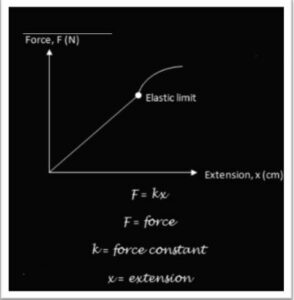Table of Contents
When a body is subjected to a distorting influence, it has the ability to revert to its original size and shape once the influence or force has been removed. When sufficient weights are applied to solid objects, they will deform; if the material is elastic, the thing will return to its original size following removal.
To make living easier, the idea of elasticity is utilised to construct safe and sturdy man-made structures such as skyscrapers and overbridges. Ropes used by cranes to lift loads are constructed so that the maximum load stress does not surpass the breaking stress.
A Brief Outline
For different materials, the physical reasons for elastic behaviour can be quite diverse. When forces are applied to metals, the atomic lattice shifts size and shape. The lattice back to its normal lower energy state once forces are withdrawn. Elasticity is created by the straining of polymer chains when loads are acting on rubbers and other polymers.
Important Concepts
When the body is distorted by the externally applied forces, internal forces are activated. Internal restorative forces enable elastic objects to restore their original form. External and internal forces are in contradiction to each other. The stress is defined as unit area when a force F is consistently applied over a surface of area A.
Force/Area = Stress
There are three sorts of stress:
- Longitudinal stress
- Bulk stress or volume stress
- Shear stress (or tangential stress)
When a body is stressed, it deforms. Strain is the fractional change in the dimension of a body caused by external stress acting on it. Strain is the charge ratio of any dimension towards its original dimension. Strain is only a number since it is the ratio of two similar physical qualities. It has neither a unit nor a dimension.
Strains are also divided into three categories.
- Volume strain
- Longitudinal strain
- Tangential strain or shearing strain
Elastic hysteresis
Even when the source of stress is gone, the strain remains. Elastic hysteresis is the term for this strain lag. This is why the strain values for the same stress vary as the load is increased and decreased.

Significance of elasticity in IIT JEE exam
The topic of solid and liquid properties receives a 5% weighting. Some of the major topics for this exam include elastic behaviour, stress-strain relationships, Hooke’s Law, Young’s modulus, bulk modulus, and modulus of rigidity. In this chapter, you will be asked 4 to 5 questions.
FAQs
Elasticity is a material's physical property. When we force is applied, it deforms, but when we stop applying force, it returns to its previous shape. Elasticity can be seen in rubber bands, elastic, and other stretchy materials.
A load of traffic that a bridge can withstand must be adequately measured before it is constructed. To resolve the difficulties of bending under strain, the elastic behaviour of the material employed must be studied first.
Poisson's ratio is the ratio of lateral strain (or transverse train) to longitudinal strain within the elastic limit. What is Elasticity, and what are some examples of it?
What is the Purpose of Elastic Material Behavior?
What is Poisson's Ratio, and what does it mean?







